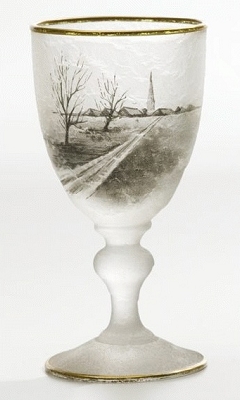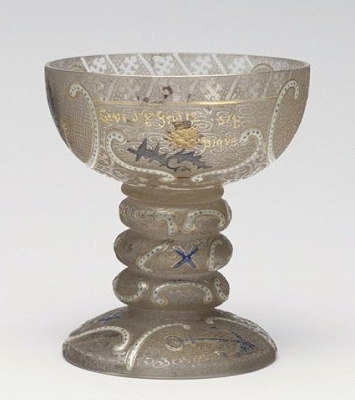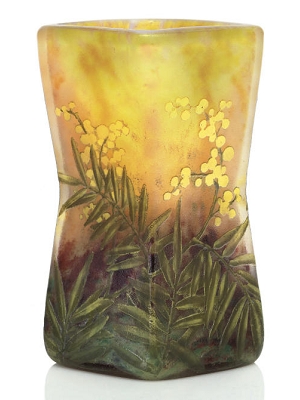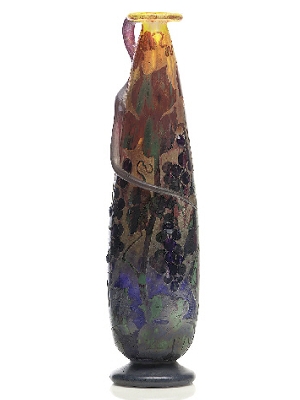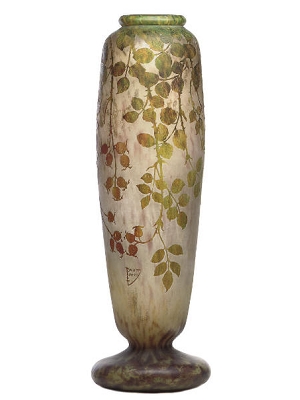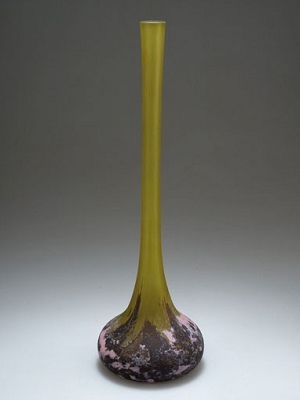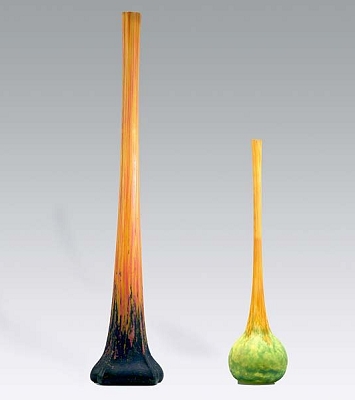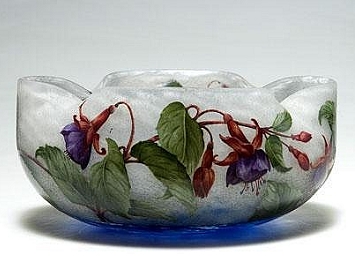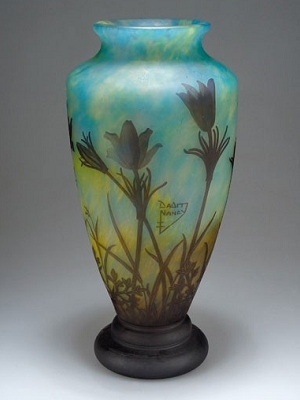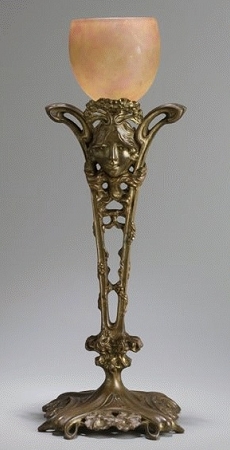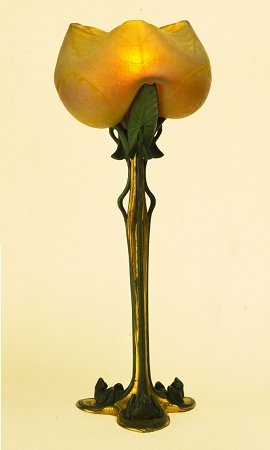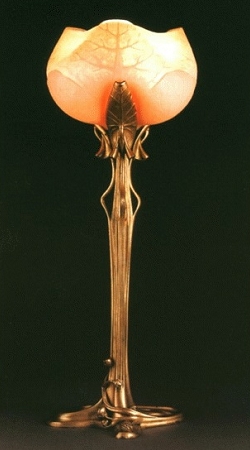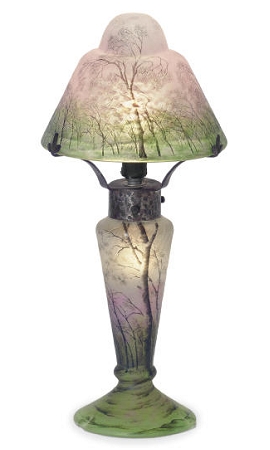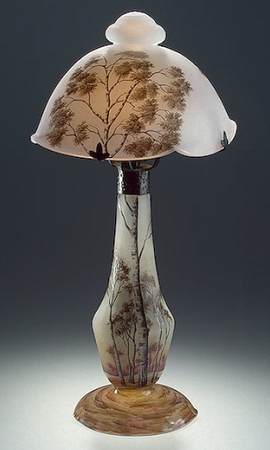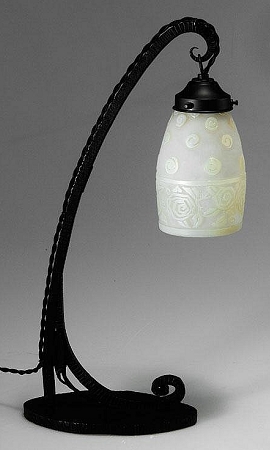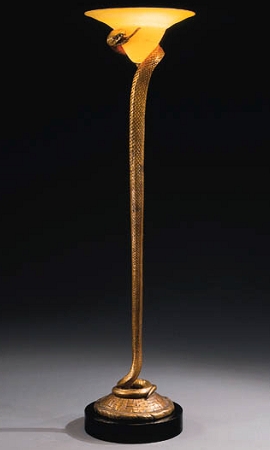Verrerie de Nancy
 Antonin Daum and Margarita Sencert with Louis (surgeon, son of Auguste Daum). Photograph taken around 1910, probably by Jean Daum. This photo belongs to a background of photographic plates of the Daum family, taken with a camera belonging to Antonin Daum. Source: WikipediaAfter the (19 July 1870 to 29 January 1871), Jean Daum (1825 - 1885), who was a notary in , moved to in 1876. Because it would be 1878 that the borderline between France and Germany moved to close to and became German territory. Wealthier people in the ceding territory out of France escaped to Nancy where suddenly became a prosperous town.
Antonin Daum and Margarita Sencert with Louis (surgeon, son of Auguste Daum). Photograph taken around 1910, probably by Jean Daum. This photo belongs to a background of photographic plates of the Daum family, taken with a camera belonging to Antonin Daum. Source: WikipediaAfter the (19 July 1870 to 29 January 1871), Jean Daum (1825 - 1885), who was a notary in , moved to in 1876. Because it would be 1878 that the borderline between France and Germany moved to close to and became German territory. Wealthier people in the ceding territory out of France escaped to Nancy where suddenly became a prosperous town.
He borrowed money to the proprietors of the Sainte-Catherine glassworks in . However the glassware company could not earn sufficient profit and these debtors could not repay their debt. Jean Daum was compelled to buy the factory at F 50,000 on 23 March 1878. He became the owner of the glassware factory employing 150 workers in the business field which he knew nothing.
Jean Daum risked all his money and the only way to survive was to get every member of the family involved. In 1878, his son Jean Louis Auguste Daum (1853-1909), who was trained as a lawyer, joined the company. He married daughters of rich businessmen. The dowries these ladies brought into their marriage went straight into the glassfactory. The three daughters of Jean Daum were asked not to marry. He did not want to spent money on their dowry. These women, Louise, Jeanne and Fanny, were non-payed employees the rest of their lives. Unfortunately Jean Daum did not know the initial success of the company. After Jean Daum's death in 1885, Auguste Daum continued the business as his father did.
In 1887 his younger brother Antonin Jean Daum (1864-1930), just graduated from the Central School of Arts and Manufactures, joined the company. Facing the poor financial condition of the factory, he was forced to take the lead.
The factory originally specialised in the watch glasses, the window glass, and the glassware for taverns (drinking glasses and pitchers). Antonin Daum began to embellish tableware by using his familier techniques of making glass and he planned to change the commodity production to the artistic creation. They started to produce glass tableware and exhibited some of their models at the Paris Exhibition of 1889. The objects exhibited by Art Nouveau master Emile Gallé, also working in Nancy at the time, greatly inspired the Daum brothers.
Daum Frères
 Caraffe by Daum, circa 1891.In the same year 1889, the brothers founded the company Daum Frères. They intended to assemble a creative and esteemed team of designers, artists and artisans to produce colored glass in a naturalistic style similar to Gallé's. Antonin Daum began to embellish tableware by using his familier techniques of making glass and he planned to change the commodity production to the artistic creation.
Caraffe by Daum, circa 1891.In the same year 1889, the brothers founded the company Daum Frères. They intended to assemble a creative and esteemed team of designers, artists and artisans to produce colored glass in a naturalistic style similar to Gallé's. Antonin Daum began to embellish tableware by using his familier techniques of making glass and he planned to change the commodity production to the artistic creation.
Between 1889 to 1891 two brothers prepared the creation of the art department that would be entrusted to Antonin. While Auguste managed the administrative and financial needs, Antonin, a trained engineer, oversaw production and a team of skilled artists. Auguste Daum was a close friend of the scientist Georges Le Monnier who helped them.
In 1891 followed the founding of the "Ateliers d'Art à la Verrerie de Nancy" which had apprentice workshops for glass technicians, polishers, etchers, painters and gilders.
Antonin began to make some simple models with acid etching and then moved to more complicate models using the techniques of wheel engraving on multi-layered glass. Starting with enamelled and engraved "art nouveau" style vases, they moved on to become one of the major forces in the Art Nouveau movement, seriously rivalling Emile Galle. The team created pieces with Japanese inspiration, using asymmetric, organic forms with subtle colors. The factory also incorporated newly developed techniques into their production of chandeliers, lamps, vases, and other art objects in innovative and creative ways.
From 1890 to 1914, Daum Frères created no less than 3000 products.
Jacques Gruber - The First Artist
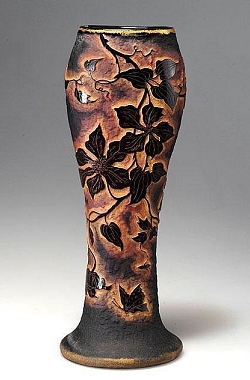 Vase by Daum, circa 1893.In 1893 was recruited and became the first artist of glassware in the company. He was entrusted to produce objects for the Chicago World's Fair of 1893. Their objects were highly acclaimed and this was the first big step that propelled Daum in the circle of art industries.
Vase by Daum, circa 1893.In 1893 was recruited and became the first artist of glassware in the company. He was entrusted to produce objects for the Chicago World's Fair of 1893. Their objects were highly acclaimed and this was the first big step that propelled Daum in the circle of art industries.
Around 1893 were seen the first etched vases from Daum in overlay technique with floral and figurative designs or with landscapes. At the same time the first use of glass powder melted in or on the glass (Verre de Jade).
In 1894 Daum participated in the exhibition of Nancy and Lyon respectively and won the Gold medals in the both exhibitions. They regulary participated the exhibitions in Lyon (1894), Bordeaux (1895) and Brussels (1895). In 1897 they won the Gold medal at the exhibition in Brussels and in the same year Antonin Daum was awaded by French government.
In 1897 a school of the glass design "Ecole des Beaux-Arts de Nancy" was established within the Daum company to educate and bring up their own designers and engravers.
Henri Bergé - The Second Artist
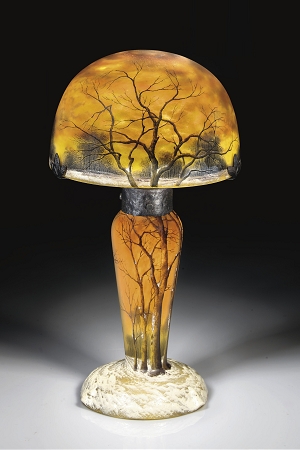 Table Lamp by Daum, circa 1910.In 1900 , who had been a pupil of the Ecole des Beaux-Arts de Nancy, became the master decorater of the company. He perfected the Daum brothers in that it replaces and became the second artist of the company. From 1898 Emile Writz joined and suported them.
Table Lamp by Daum, circa 1910.In 1900 , who had been a pupil of the Ecole des Beaux-Arts de Nancy, became the master decorater of the company. He perfected the Daum brothers in that it replaces and became the second artist of the company. From 1898 Emile Writz joined and suported them.
The consecration of the adventure happened when the first Grand Prix for the glassware (Expo 1900) was awarded to Daum Freres and Emile Gallé. Daum had carefully crafted pieces: the decor spacer (patent 1899), fixtures that become a specialty. By 1893 the Daums' lamps, directly inspired by Emile Gallé, were produced in acid-etched cameo. These lampes-fleurs, displayed at the , gained critical acclaim and established the firm as innovators in the art glass market. The lamps display two dominant themes in the Daum oeuvre: insects and night-creatures, here to for considered distasteful for use in the decorative arts, and flowers including marguerites, crocuses, gentians, columbines, hyacinths, and umbels.
In 1901 the statutes of the School of Nancy were formally laid. Emile Gallé was the man behind this group and became its president. Antonin was a vice-president. Antonin was also one of the personalities of the Chamber of Commerce Nancy. It played an important role in 1909 at the International Exhibition for Eastern France that marked the end of the School of Nancy. When Emile Galle died in 1904, the Daum became the leader.
Art Deco
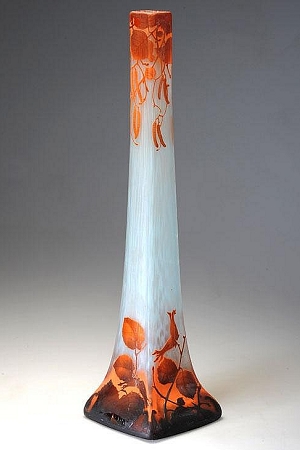 Vase by Daum, circa 1920.After 1918 the Daum provided new glassware, adapting their business to the new production conditions, qualities, technical and aesthetic orientations to more utilitarian.
Vase by Daum, circa 1920.After 1918 the Daum provided new glassware, adapting their business to the new production conditions, qualities, technical and aesthetic orientations to more utilitarian.
The company continued to participate in major exhibitions; Barcelona in 1923, International Exhibition of Decorative Arts in Paris in 1925, Colonial Exhibition in Paris in 1931.
In the 1920s, Paul directed the production design to the Art Deco at the loss of public interest in Art Nouveau. The demand is high and the company grew well. It opened the second glass Belle Étoile Croismare in 1925 that Paul was the director. It provided glassware, white balls, fantasy signed Lorrain.
Pierre Davesne created models from 1928.
The economic crisis of the 1930 Belle Star button which was closed in 1934. Some major commands allowed the company to continue its production in 1935, which were the transatlantic orders of 90 000 glass pieces for the liner Normandie.
Crystal
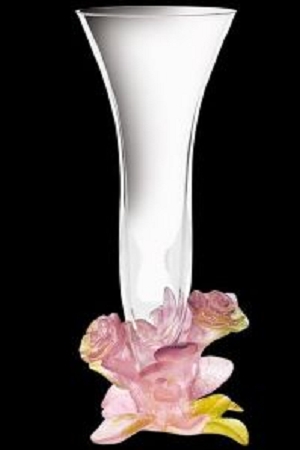 Vase by Cristallerie Daum.After the Second World War, the crystal took the prominent place, under the direction of Henry and Michel Daum. Jacques, grand-son of Augustus, brought new life in 1965 by appealing to contemporary artists. Caesar spent several weeks working with Nancy and new operations of the glass.
Vase by Cristallerie Daum.After the Second World War, the crystal took the prominent place, under the direction of Henry and Michel Daum. Jacques, grand-son of Augustus, brought new life in 1965 by appealing to contemporary artists. Caesar spent several weeks working with Nancy and new operations of the glass.
In 1976, Pierre de Chérisey, little son of Antoninus, was the last president of the Daum family to head the company (until the 1990s).
The crystal still exists and its production is internationally known: many designers working for her, such as Jean Boggio.
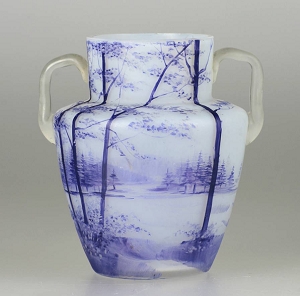 Paysage de Verre Vase by Daum Freres, circa 1910. from my gallery.The world-famous manufacturer, which still exists today under the name "Cristallerie Daum", was founded in 1875 as "Verrerie de Nancy". The manufacture was taken over in 1887 by the two sons Auguste (1853-1909) and Antonin Daum (1864-1930), the latter taking over the artistic direction. The Daum workshop formed some of the great names in Art Nouveau: Jacques Gruber (from 1893 to 1897), Henri Bergé (from 1900), Almaric Walter and Charles Schneider made their debut there. These men could not use their own name. All the vases were signed Daum. This is the reason why the factory continued to produce high quality glass.
Paysage de Verre Vase by Daum Freres, circa 1910. from my gallery.The world-famous manufacturer, which still exists today under the name "Cristallerie Daum", was founded in 1875 as "Verrerie de Nancy". The manufacture was taken over in 1887 by the two sons Auguste (1853-1909) and Antonin Daum (1864-1930), the latter taking over the artistic direction. The Daum workshop formed some of the great names in Art Nouveau: Jacques Gruber (from 1893 to 1897), Henri Bergé (from 1900), Almaric Walter and Charles Schneider made their debut there. These men could not use their own name. All the vases were signed Daum. This is the reason why the factory continued to produce high quality glass. Antonin Daum and Margarita Sencert with Louis (surgeon, son of Auguste Daum). Photograph taken around 1910, probably by Jean Daum. This photo belongs to a background of photographic plates of the Daum family, taken with a camera belonging to Antonin Daum. Source: WikipediaAfter the Franco-Prussian War (19 July 1870 to 29 January 1871), Jean Daum (1825 - 1885), who was a notary in Bitche, moved to Nancy in 1876. Because it would be 1878 that the borderline between France and Germany moved to close to Nancy and Bitche became German territory. Wealthier people in the ceding territory out of France escaped to Nancy where suddenly became a prosperous town.
Antonin Daum and Margarita Sencert with Louis (surgeon, son of Auguste Daum). Photograph taken around 1910, probably by Jean Daum. This photo belongs to a background of photographic plates of the Daum family, taken with a camera belonging to Antonin Daum. Source: WikipediaAfter the Franco-Prussian War (19 July 1870 to 29 January 1871), Jean Daum (1825 - 1885), who was a notary in Bitche, moved to Nancy in 1876. Because it would be 1878 that the borderline between France and Germany moved to close to Nancy and Bitche became German territory. Wealthier people in the ceding territory out of France escaped to Nancy where suddenly became a prosperous town. Caraffe by Daum, circa 1891.In the same year 1889, the brothers founded the company Daum Frères. They intended to assemble a creative and esteemed team of designers, artists and artisans to produce colored glass in a naturalistic style similar to Gallé's. Antonin Daum began to embellish tableware by using his familier techniques of making glass and he planned to change the commodity production to the artistic creation.
Caraffe by Daum, circa 1891.In the same year 1889, the brothers founded the company Daum Frères. They intended to assemble a creative and esteemed team of designers, artists and artisans to produce colored glass in a naturalistic style similar to Gallé's. Antonin Daum began to embellish tableware by using his familier techniques of making glass and he planned to change the commodity production to the artistic creation. Vase by Daum, circa 1893.In 1893 Jacques Gruber was recruited and became the first artist of glassware in the company. He was entrusted to produce objects for the Chicago World's Fair of 1893. Their objects were highly acclaimed and this was the first big step that propelled Daum in the circle of art industries.
Vase by Daum, circa 1893.In 1893 Jacques Gruber was recruited and became the first artist of glassware in the company. He was entrusted to produce objects for the Chicago World's Fair of 1893. Their objects were highly acclaimed and this was the first big step that propelled Daum in the circle of art industries. Table Lamp by Daum, circa 1910.In 1900 Henri Bergé, who had been a pupil of the Ecole des Beaux-Arts de Nancy, became the master decorater of the company. He perfected the Daum brothers in that it replaces Jacques Gruber and became the second artist of the company. From 1898 Emile Writz joined and suported them.
Table Lamp by Daum, circa 1910.In 1900 Henri Bergé, who had been a pupil of the Ecole des Beaux-Arts de Nancy, became the master decorater of the company. He perfected the Daum brothers in that it replaces Jacques Gruber and became the second artist of the company. From 1898 Emile Writz joined and suported them. Walter Almaric, A PÂTE-DE-VERRE VASE Of flaring cylindrical form, the top rim moulded with pine-branches. H: 9 cm. Sold at EUR 2280 in Nov 2006, CHristie's In 1904, Walter Almaric developed the molten glass.
Walter Almaric, A PÂTE-DE-VERRE VASE Of flaring cylindrical form, the top rim moulded with pine-branches. H: 9 cm. Sold at EUR 2280 in Nov 2006, CHristie's In 1904, Walter Almaric developed the molten glass. Vase by Daum, circa 1920.After 1918 the Daum provided new glassware, adapting their business to the new production conditions, qualities, technical and aesthetic orientations to more utilitarian.
Vase by Daum, circa 1920.After 1918 the Daum provided new glassware, adapting their business to the new production conditions, qualities, technical and aesthetic orientations to more utilitarian. Vase by Cristallerie Daum.After the Second World War, the crystal took the prominent place, under the direction of Henry and Michel Daum. Jacques, grand-son of Augustus, brought new life in 1965 by appealing to contemporary artists. Caesar spent several weeks working with Nancy and new operations of the glass.
Vase by Cristallerie Daum.After the Second World War, the crystal took the prominent place, under the direction of Henry and Michel Daum. Jacques, grand-son of Augustus, brought new life in 1965 by appealing to contemporary artists. Caesar spent several weeks working with Nancy and new operations of the glass.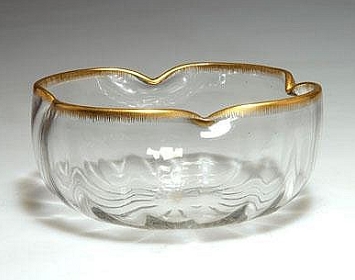 Bowl by Daum, 1890.
Bowl by Daum, 1890.
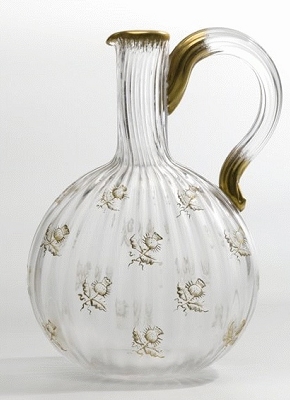 Broc, service "Dukes", after 1891. Glass, engraved decoration to the wheel, gold highlights, loop under. H. 16cm; L. 11cm. Musée d'Orsay
Broc, service "Dukes", after 1891. Glass, engraved decoration to the wheel, gold highlights, loop under. H. 16cm; L. 11cm. Musée d'Orsay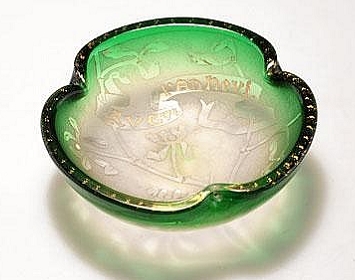 Bowl by Daum, 1894.
Bowl by Daum, 1894. Bowl by Daum, 1895.
Bowl by Daum, 1895.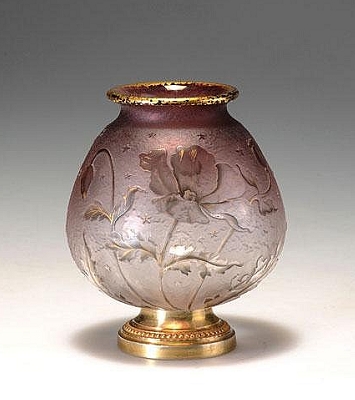 Vase by Daum, 1895.
Vase by Daum, 1895.
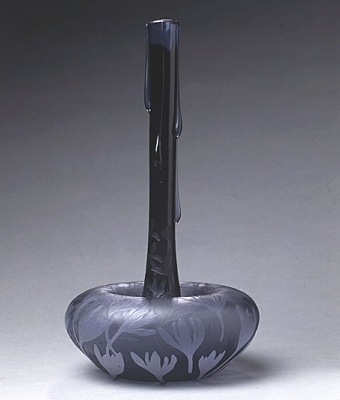 Vase, The mourning of purple crocuses in 1893. Layered crystal, etched decoration, applications. H. 46.7cm; L. 25cm.
Musée d'Orsay
Vase, The mourning of purple crocuses in 1893. Layered crystal, etched decoration, applications. H. 46.7cm; L. 25cm.
Musée d'Orsay Vase by Daum, 1893.
Vase by Daum, 1893.
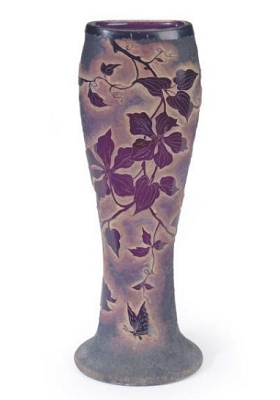 Vase by Daum, 1893.
Vase by Daum, 1893.
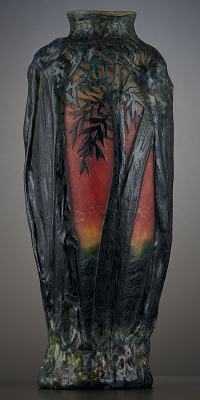 Vase by Daum, 1900.
Vase by Daum, 1900.
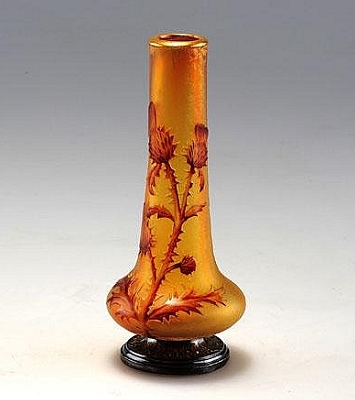 Vase by Daum, 1897.
Vase by Daum, 1897.
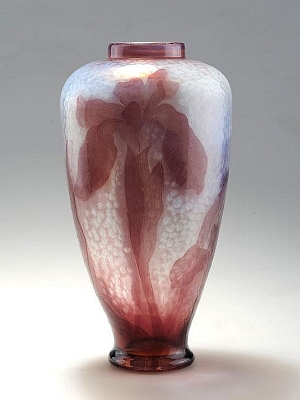 Vase by Daum, 1897.
Vase by Daum, 1897.
 Vase by Daum, 1898.
Vase by Daum, 1898.
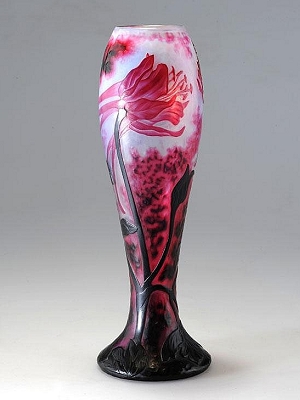 Vase by Daum, 1898.
Vase by Daum, 1898.
 Vase by Daum, 1900.
Vase by Daum, 1900.
 Vase by Daum, 1900.
Vase by Daum, 1900.
 Vase by Daum, 1900.
Vase by Daum, 1900.
 Vase by Daum, 1900.
Vase by Daum, 1900.
 Vase by Daum, 1902.
Vase by Daum, 1902.
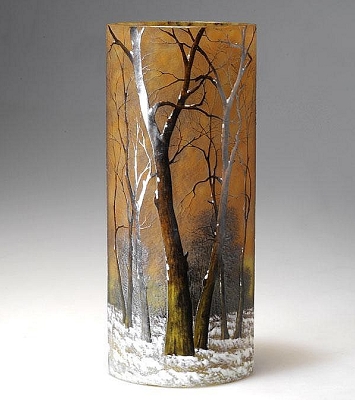 Vase by Daum, 1902.
Vase by Daum, 1902.
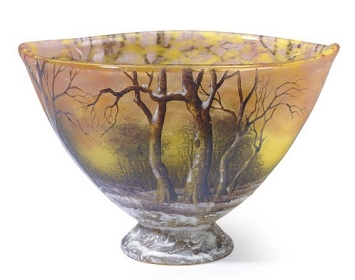 Bowl by Daum, 1902.
Bowl by Daum, 1902.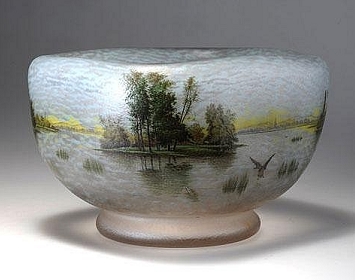 Bowl by Daum, 1905.
Bowl by Daum, 1905.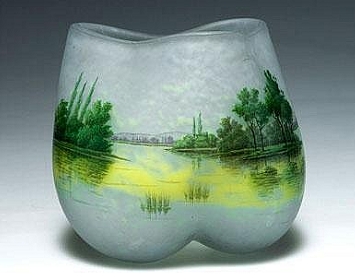 Bowl by Daum, 1905.
Bowl by Daum, 1905. Vase by Daum, 1903.
Vase by Daum, 1903.
 Vase by Daum, 1904.
Vase by Daum, 1904.
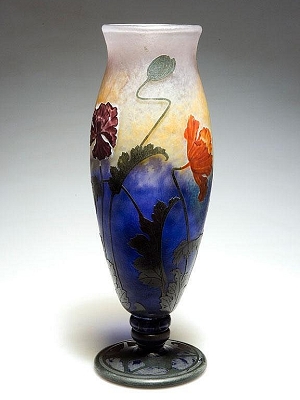 Vase by Daum, 1905.
Vase by Daum, 1905.
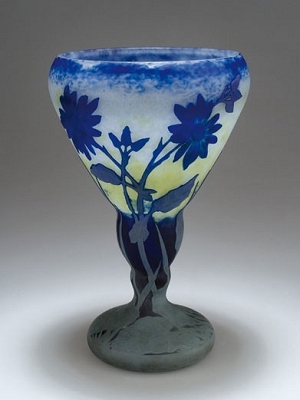 Vase by Daum, 1905.
Vase by Daum, 1905.
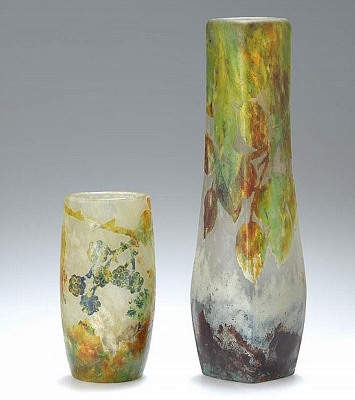 Vase by Daum, 1910.
Vase by Daum, 1910.
 Vase, Between 1905 and 1910,
Blown-moulded glass. H. 10.8cm; D. 9.2cm. Musée d'Orsay
Vase, Between 1905 and 1910,
Blown-moulded glass. H. 10.8cm; D. 9.2cm. Musée d'Orsay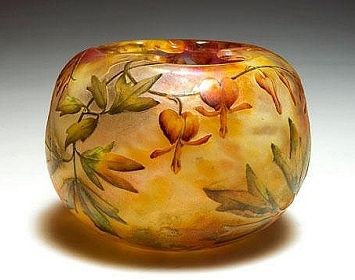 Bowl by Daum, 1910.
Bowl by Daum, 1910.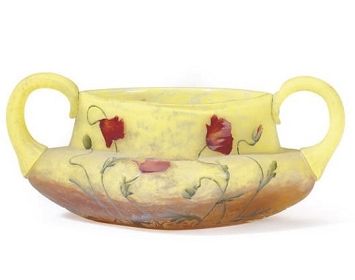 Bowl by Daum, 1910.
Bowl by Daum, 1910.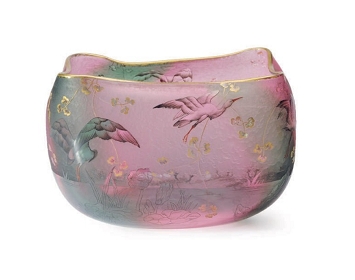 Bowl by Daum, circa 1910. Singned in Intaglio 'DAUM NANCY'. With herons in flight above a lily pond. H: 12.3cm. Sold at $ 32,500 in March 2010, Christie's.
Bowl by Daum, circa 1910. Singned in Intaglio 'DAUM NANCY'. With herons in flight above a lily pond. H: 12.3cm. Sold at $ 32,500 in March 2010, Christie's. 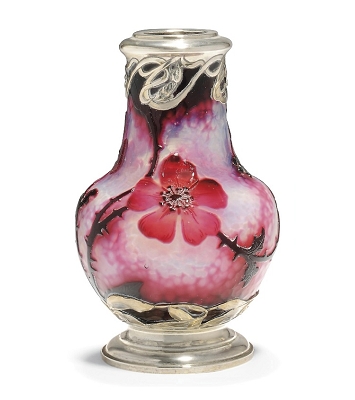 Vase by Daum, 1910.
Vase by Daum, 1910.
 Vase by Daum, 1910.
Vase by Daum, 1910.
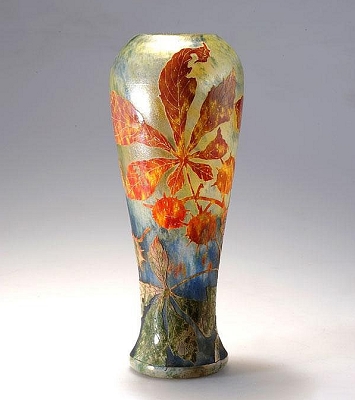 Vase by Daum, 1913.
Vase by Daum, 1913.
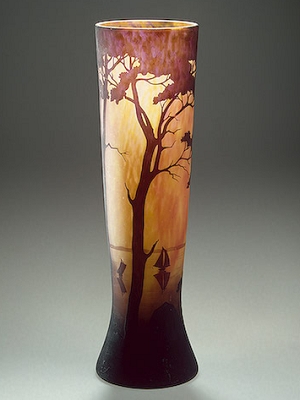 Vase by Daum, ciraca 1913. Landscape with a Lake. Hermitage Museum.
Vase by Daum, ciraca 1913. Landscape with a Lake. Hermitage Museum.
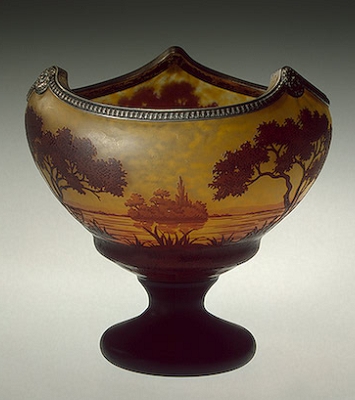 Vase by Daum, ciraca 1913. Landscape with a Lake. Hermitage Museum.
Vase by Daum, ciraca 1913. Landscape with a Lake. Hermitage Museum.
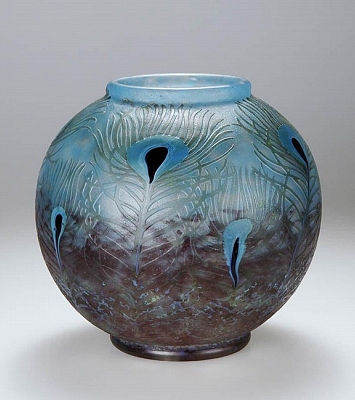 Vase by Daum, 1914.
Vase by Daum, 1914.
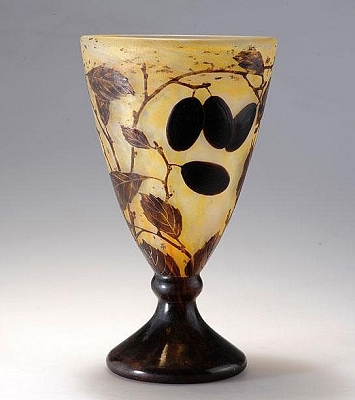 Vase by Daum, 1924.
Vase by Daum, 1924.
 Vase by Daum, 1920.
Vase by Daum, 1920.
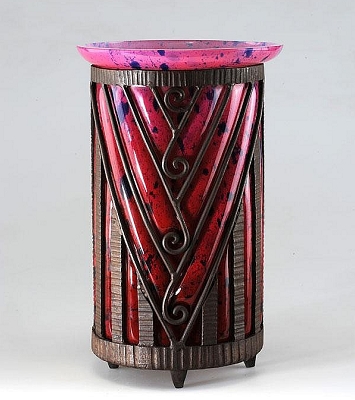 Vase by Daum, 1928.
Vase by Daum, 1928.
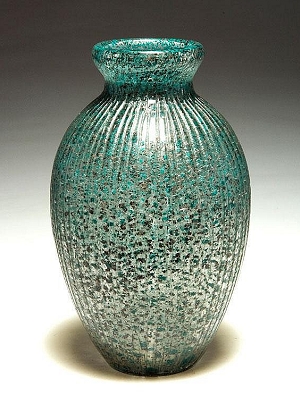 Vase by Daum, 1930.
Vase by Daum, 1930.
 Lamp by Daum, 1900.
Lamp by Daum, 1900.
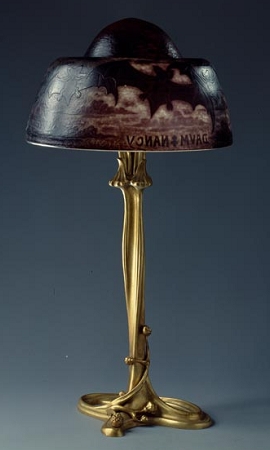 Table Lamp by Daum, 1905. Three-layered glass; bronze, gilded. H 71.5cm.
Table Lamp by Daum, 1905. Three-layered glass; bronze, gilded. H 71.5cm. Top
Top Site Map
Site Map References
References About Me
About Me

